 |
The History of Council Housing |
  |
|
|
6 A New Urban Vision
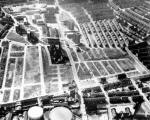 |
The country was still faced with large areas of slum housing with many houses
described as unfit to live in and many more people living in sub-standard conditions.
Many of these houses had been due for demolition under slum clearance plans devised
before the war under the 1930 Housing Act and had been neglected since. Inner
city populations were growing rapidly and the shortage of good quality housing
combined with inner city vacant and derelict sites left by the bombs created
an opportunity for modernisers to promote a new urban vision. Architects and
planners favoured a modernist approach and the 'streets in the sky' were
devised. This was against a backdrop of political change, a new
Conservative government was elected in in 1951 and after initially
pledging to increase council house production in line with manifesto
targets, sizes and standards were reduced and a greater emphasis of
house building was given back to the private sector. |
 |
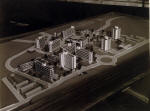 |
Councils could act under slum clearance powers to compulsory
purchase inner urban land and housing for redevelopment, most of the
existing housing was old and lacked any modern amenities however there
were some communities saved from redevelopment following protests from
local residents who fought and saved their neighbourhoods from ‘slum’
status and demolition. Following in the themes of modernist ideas, many local councils built pre-fabricated blocks of flats. Derelict
inner city sites were
cleared of any remaining old streets and houses and pioneering new schemes were
planned. |
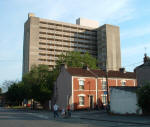 |
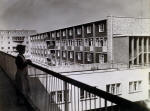 |
The individual developments often included the coherent construction
of blocks of various sizes with a 'hub' that provided heating and hot water
services. Communal facilities such as a
laundry, creche, doctor's surgery, children play areas and stores for bikes and
prams were often intended to be part of the scheme. Many of the schemes
were controversial in their day, on the one hand people were allocated
modern flats with the all the modern facilities, however they often paid
the price of the break up of their established communities. |
 |
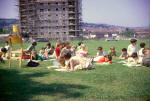 |
However, the concept of council high rise flats was criticised in
later years for creating poor quality badly built housing and
high-density estates and many of the new estates had become hard to let
and hard to live in by the 1970s. In reality many of the flats were
built at low cost on run-down inner city areas or alternatively on
remote low cost surburban sites, some quickly gaining a poor reputation.
One example is the Netherley Estate in Liverpool. Begun in late 1960s,
the estate was built to house people moving from the south dock area -
the Dingle. From the start the estate was poorly located with no local
employment and difficult and poor transport to the city centre. upon
completion in the early 1970s, the five storey concrete slab blocks of
flats were plagued with construction problems and rapidly required
expensive maintenance. The estate developed a bad reputation with a high
concentration of problem tenants. Within ten years of completion, the
council began to move people out and rehouse them elsewhere. Netherley
Estate has since been demolished at massive cost. |
 |
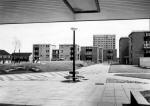 |
The increased development of high rise blocks of flats during the
1950s and 60s can be directly attributed to a response to the
Government's subsidy system. From 1956, subsidy was confined to new
houses built to replace those lost to slum clearance and there was more
money available for blocks of more than six storeys high. Helped by this
subsidy, neighbourhoods all over the country were being demolished and
rebuilt according to modern town planning concepts of mixed estates with
low and high-rise building. Council house building redoubled in London
and by the 1960s over 500,000 new flats had been added to London’s
stock. Many of the new dwellings were in the form of multi-storey tower
blocks which seems the ideal solution to the housing problem at the
time. |
 |
|
|